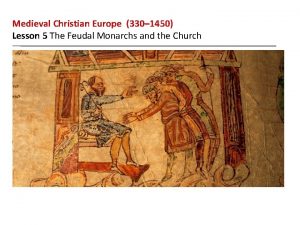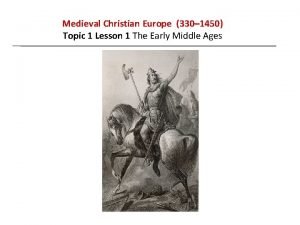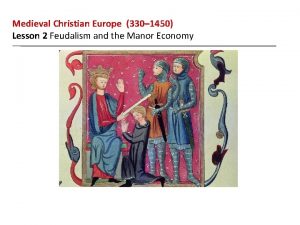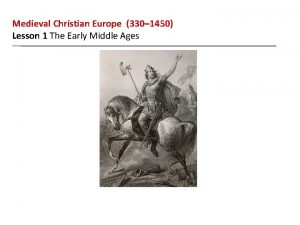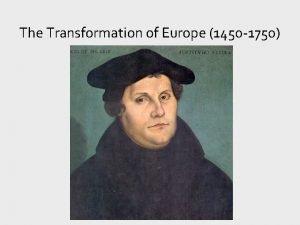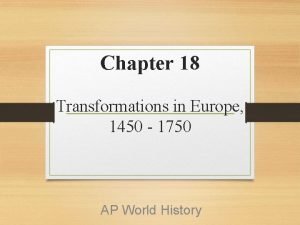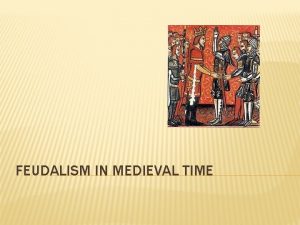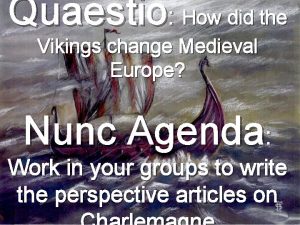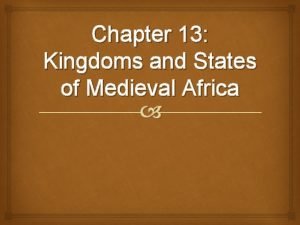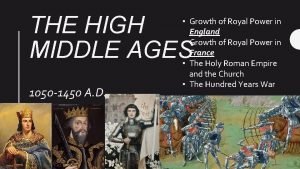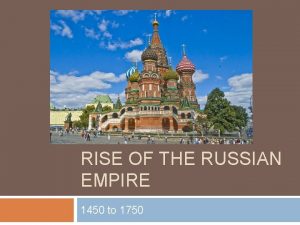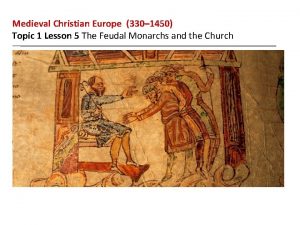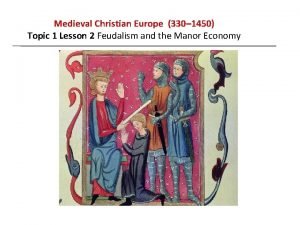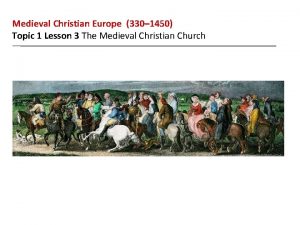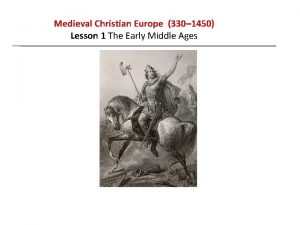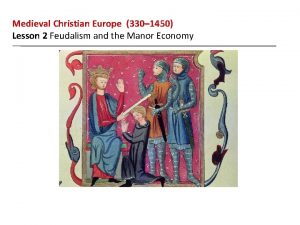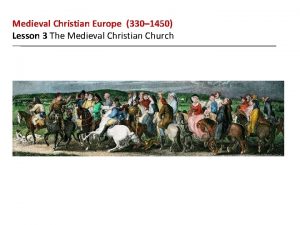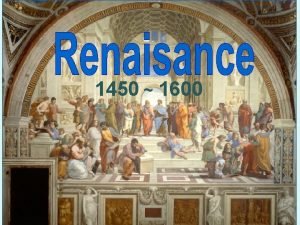Medieval Christian Europe 330 1450 Lesson 1 The













- Slides: 13

Medieval Christian Europe (330– 1450) Lesson 1 The Early Middle Ages

Medieval Christian Europe (330– 1450) Lesson 1 The Early Middle Ages Learning Objectives • Summarize ways in which the Byzantine empire flourished after the decline of Rome. • Explain the impact of the fall of Rome on Western Europe.

The Byzantine Empire Thrives Constantinople Grows: • Great defensive location, guarded on 3 sides by water • Commanded key trade routes between Europe and Asia • Continued activities from Roman Heritage like chariot racing Blending of Cultures: • Blended Ancient Greek, Roman, Christian traditions with Mediterranean customs

The Byzantine Empire Thrives Major European and Asian trade routes met at Constantinople. Analyze the Maps and summarize Constantinople's protective advantages.

The Age of Justinian The Byzantine empire reached its greatest size under the emperor Justinian, who ruled from 527 to 565. Justinian was determined to revive ancient Rome by retaking lands that had been overrun by invaders.

The Age of Justinian Hagia Sophia Called the Holy Wisdom, this cathedral is Justinian’s greatest architectural triumph

The Age of Justinian • • Justinian’s Code and Its Impact Early in Justinian’s rule he set up a commission to collect, revise, and organize all the laws of Ancient Rome This is called Justinian’s Code. By 100 AD these laws reach Western Europe which are used by monarchs to consolidate their power. Eventually will become the basis for international law

Justinian Rules With Absolute Power • He is an autocrat, rules with complete authority • He also has power in the Church, deemed Christ’s co-ruler on earth • He is helped by his wife Theodora, who served as an advisor and co-ruler to Justinian. She even challenged some of his policies

• • Economic and Military Power Byz. had a strong economy. Peasants payed taxes, worked lands, and provided soldiers for the army They will continue to have coin money as coin money will disappear in Western Europe With all this money they will be able to fund a strong military They will also have a secret weapon called Greek fire which will be used in their navy

• • The Empire Declines The Byzantine Empire will repeatedly be attack by invaders and hold them off These invaders include Persians, Slavs, Vikings, Huns, Arabs, and Turks These Arab armies will bring a new religions with them, Islam Eventually in the 600 s and 700 s these Arab armies will take much territory but will be stopped at Constantinople allowing smaller Germanic kingdoms in Western Europe to develop

The Age of Justinian The Byzantine empire reached its greatest size by 565. Analyze Maps Describe the Byzantine empire's extent in 1020. Infer What does the empire's size in 565 suggest about Justinian’s rule?

Changes in Western Europe • In Europe, the centuries after the fall of Rome are called the Middle Ages, which lasted from about 500 to 1350. • The Middle Ages refers to the time between the ancient and modern worlds. • During this long stretch of time, Western Europe passed through two distinct phases: the early Middle Ages, lasting from about 500 to 1050, and the late Middle Ages, lasting from about 1050 to 1350. A Shift to the North • Power leaves the Mediterranean and heads to Western Europe • Western Europe has great potential because of resources A Time of Decline: • Learning, and trade decline • Population loss due to wars and loss of civilization

Changes in Western Europe Analyze Graphs When does Rome's greatest population drop in thousands occur? the greatest percentage drop? Draw Conclusions What does the information in this graph tell you?
 Unit 8 lesson 5 medieval christian europe
Unit 8 lesson 5 medieval christian europe Topic 1 medieval christian europe
Topic 1 medieval christian europe Medieval christian europe part 2 practice
Medieval christian europe part 2 practice Medieval kingdoms in europe lesson 1
Medieval kingdoms in europe lesson 1 Europe 1450
Europe 1450 Europe map 1750
Europe map 1750 England hierarchy
England hierarchy How did the vikings change medieval europe
How did the vikings change medieval europe Medieval africa geography
Medieval africa geography Mughal empire 1450 to 1750
Mughal empire 1450 to 1750 1450 ad
1450 ad Canyon media st george
Canyon media st george Fur trade ap world history
Fur trade ap world history Russia 1450
Russia 1450
